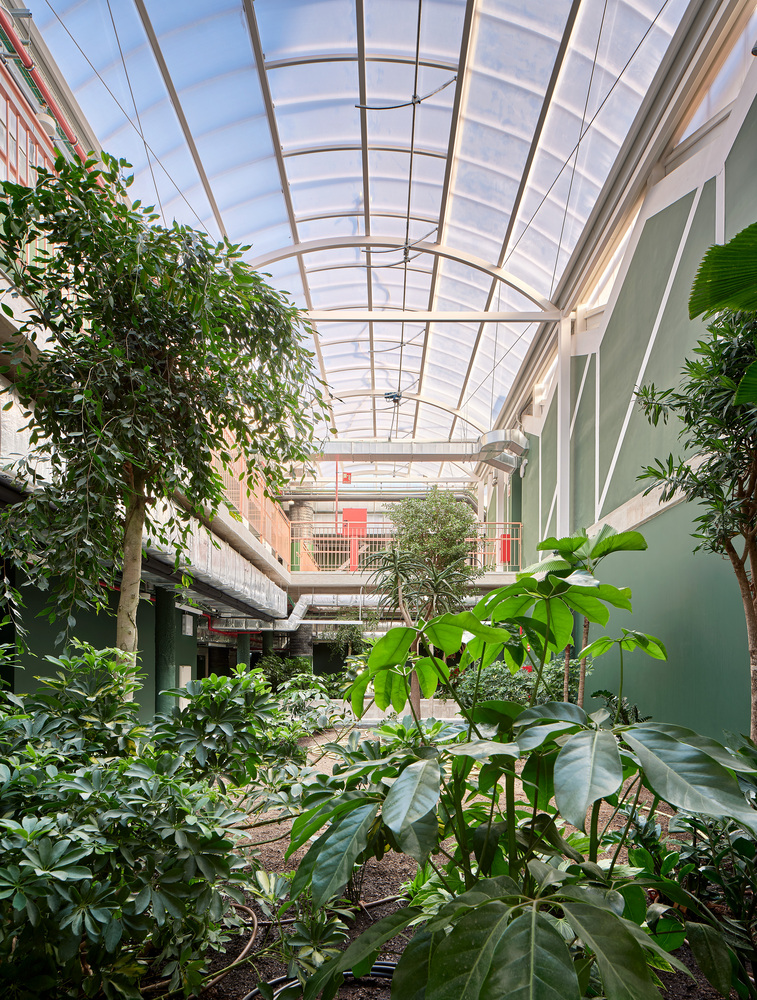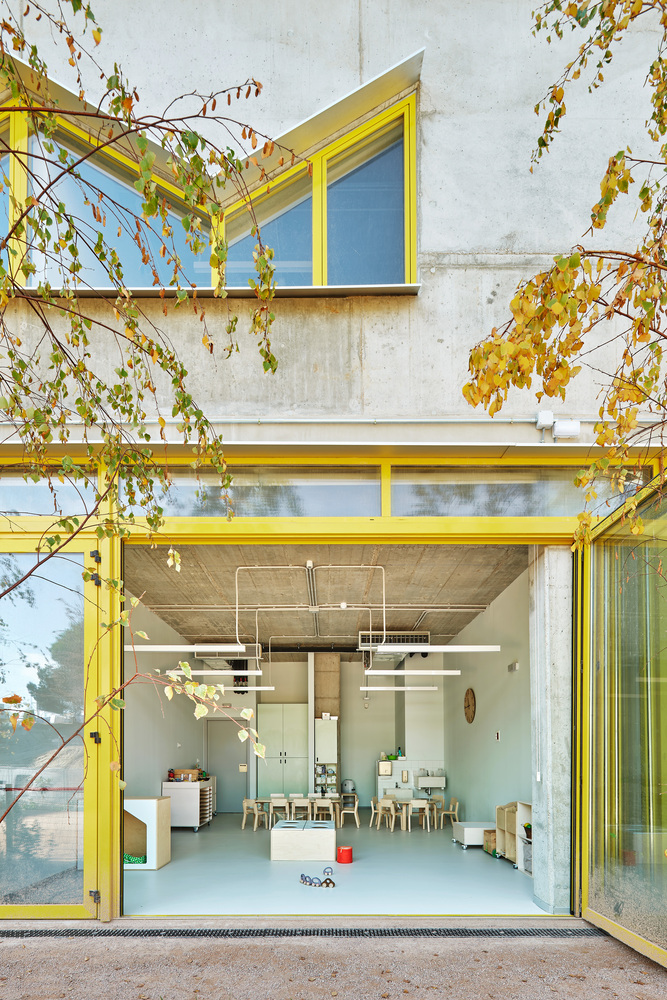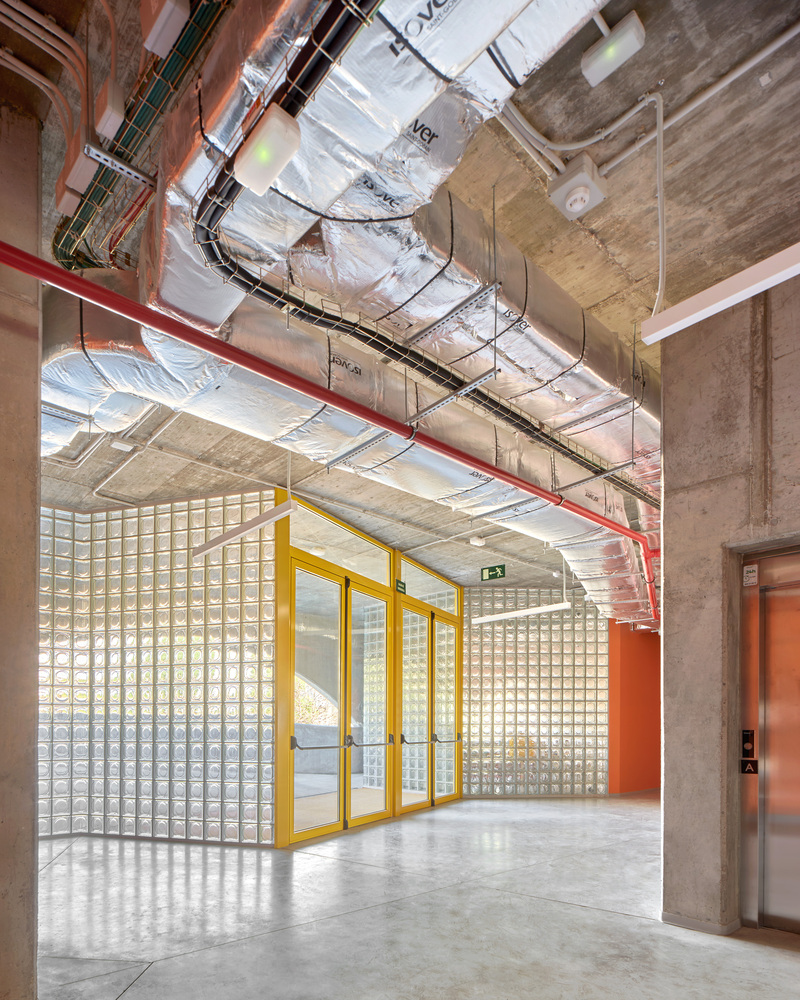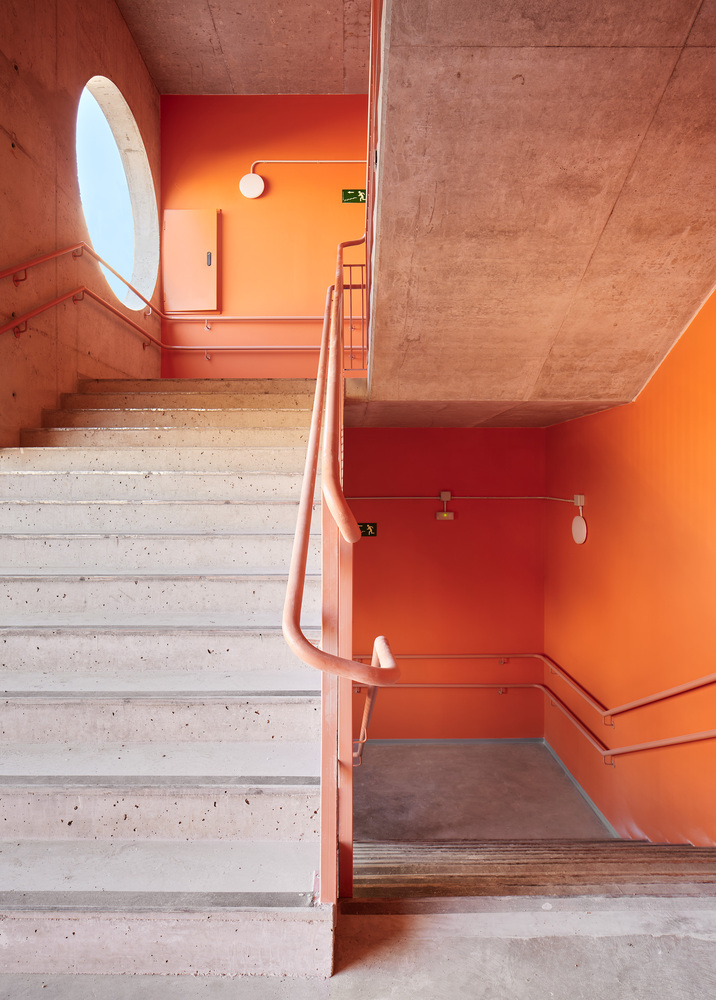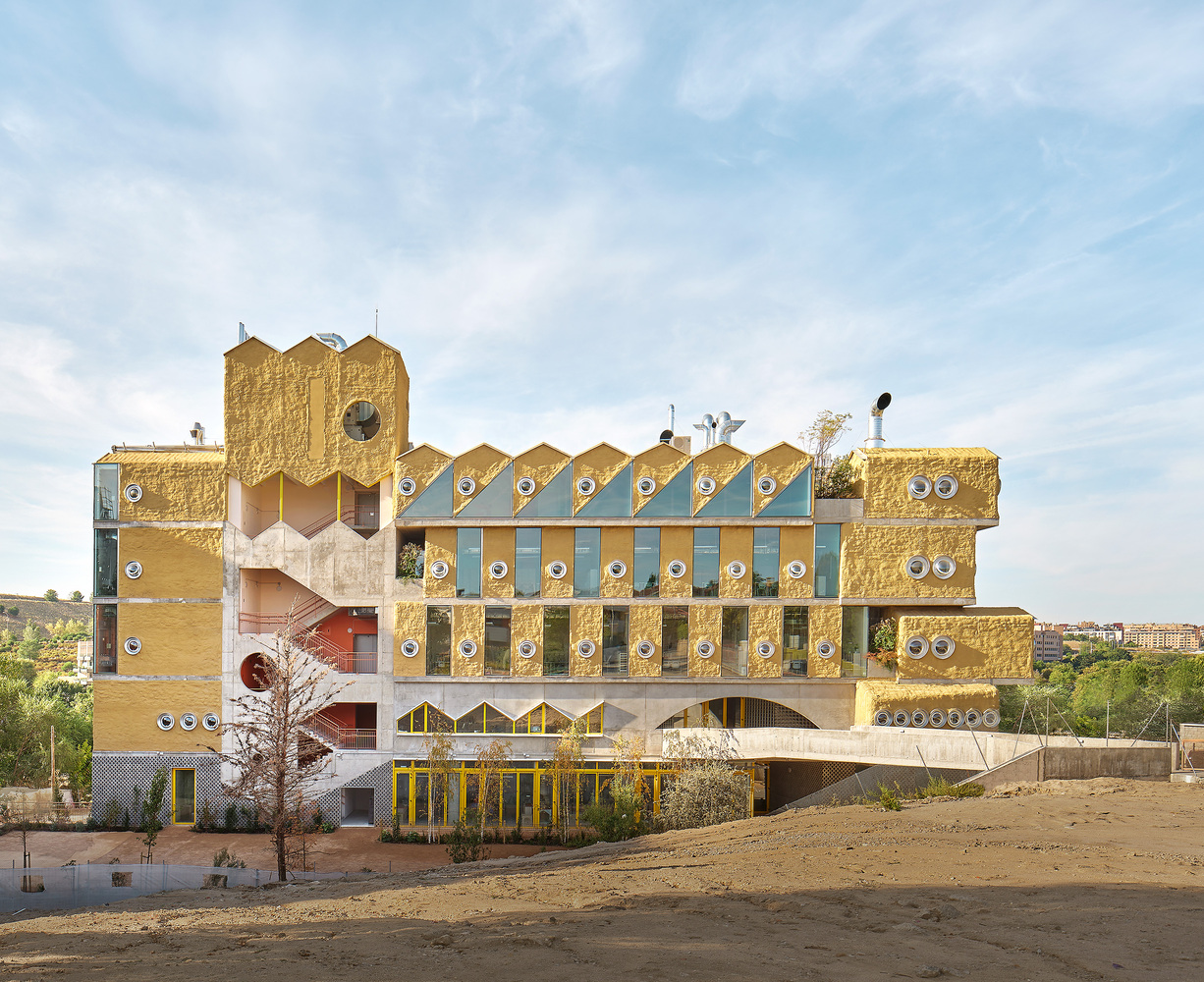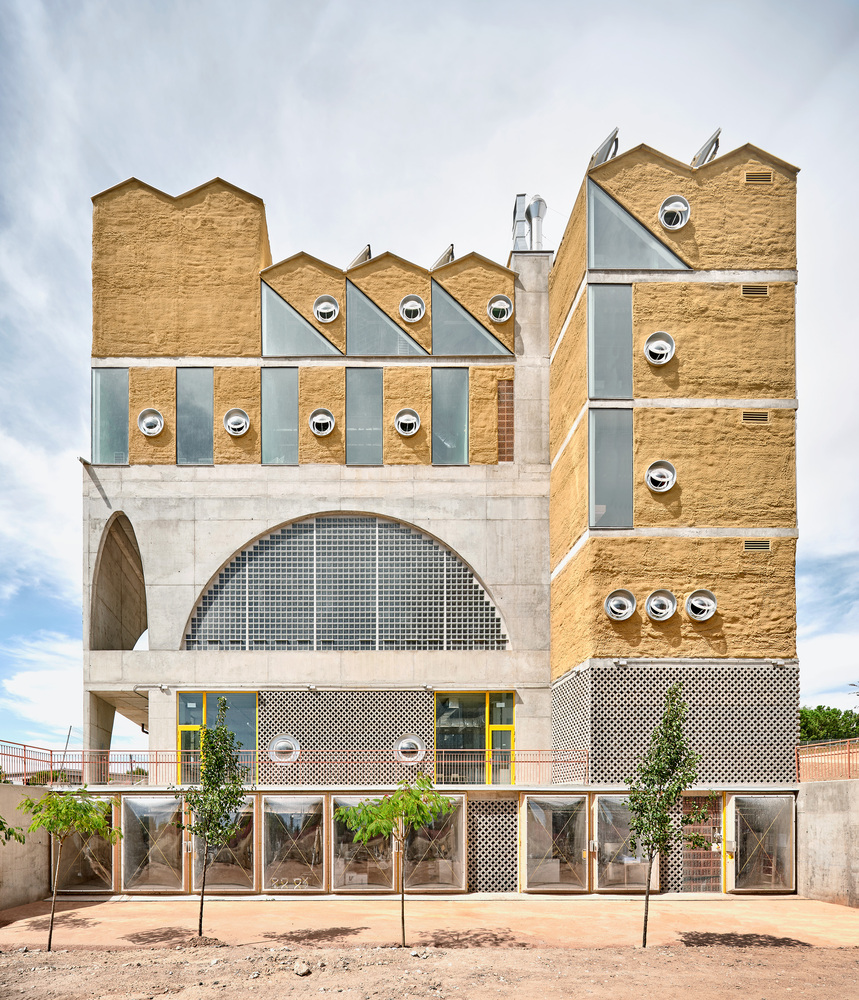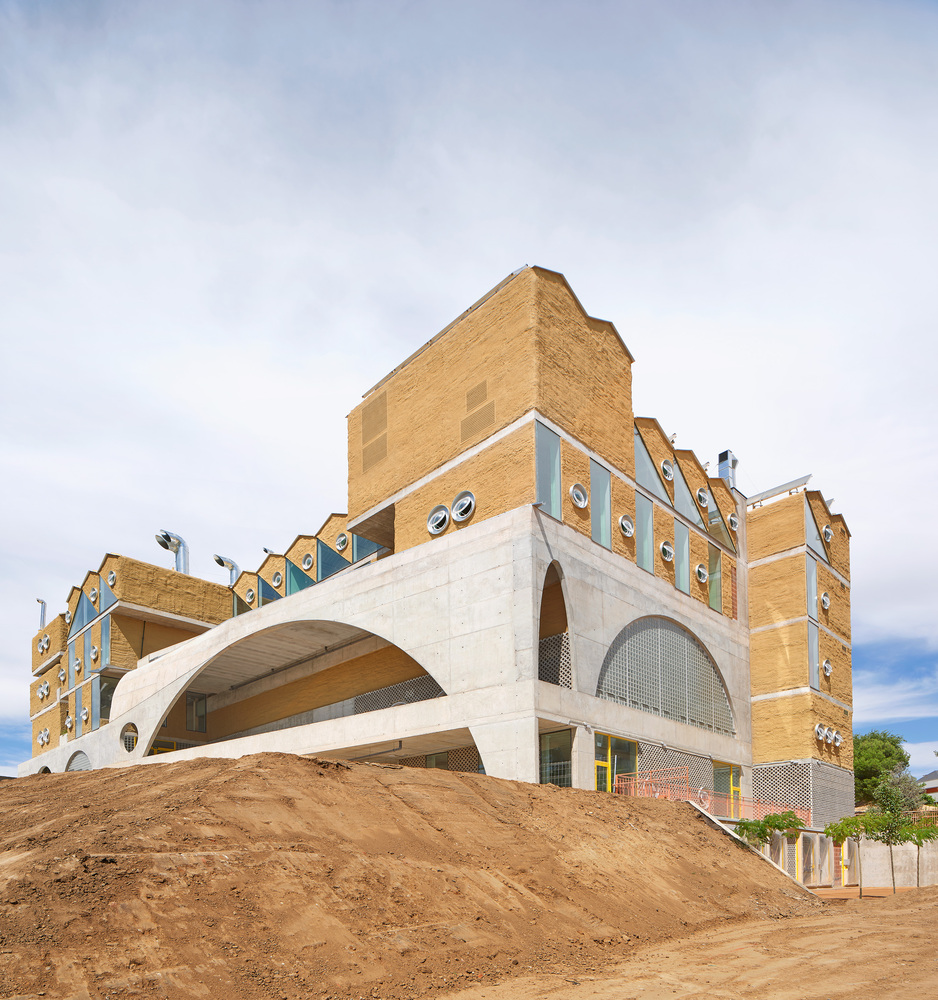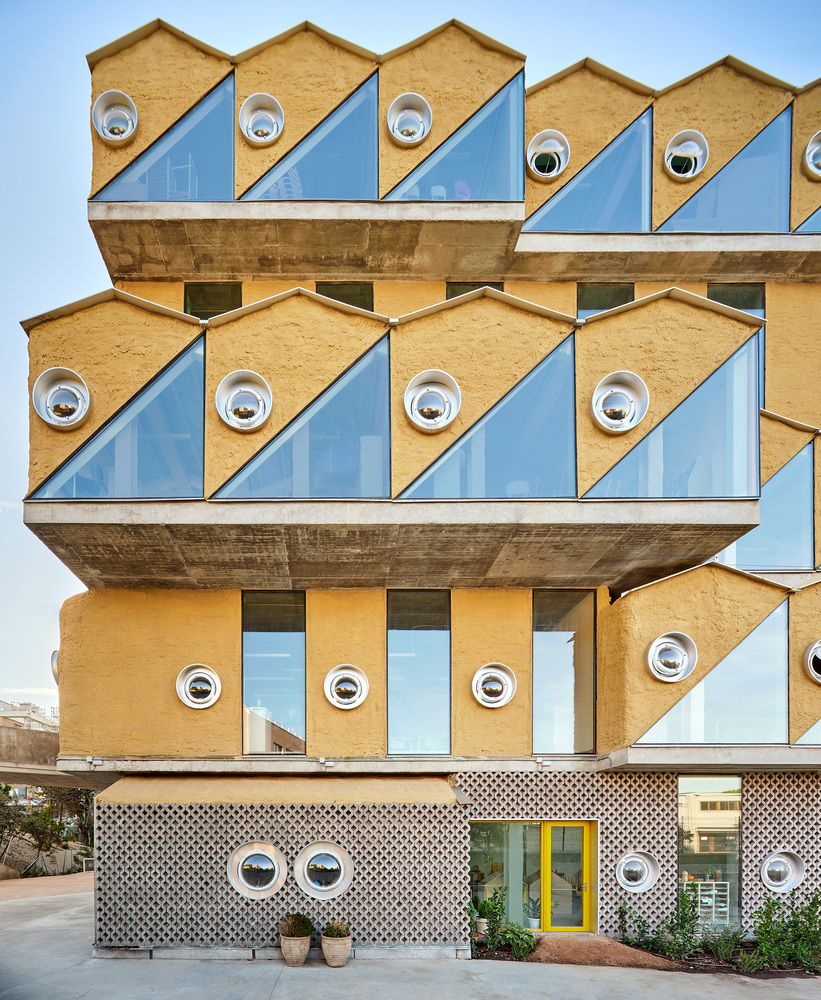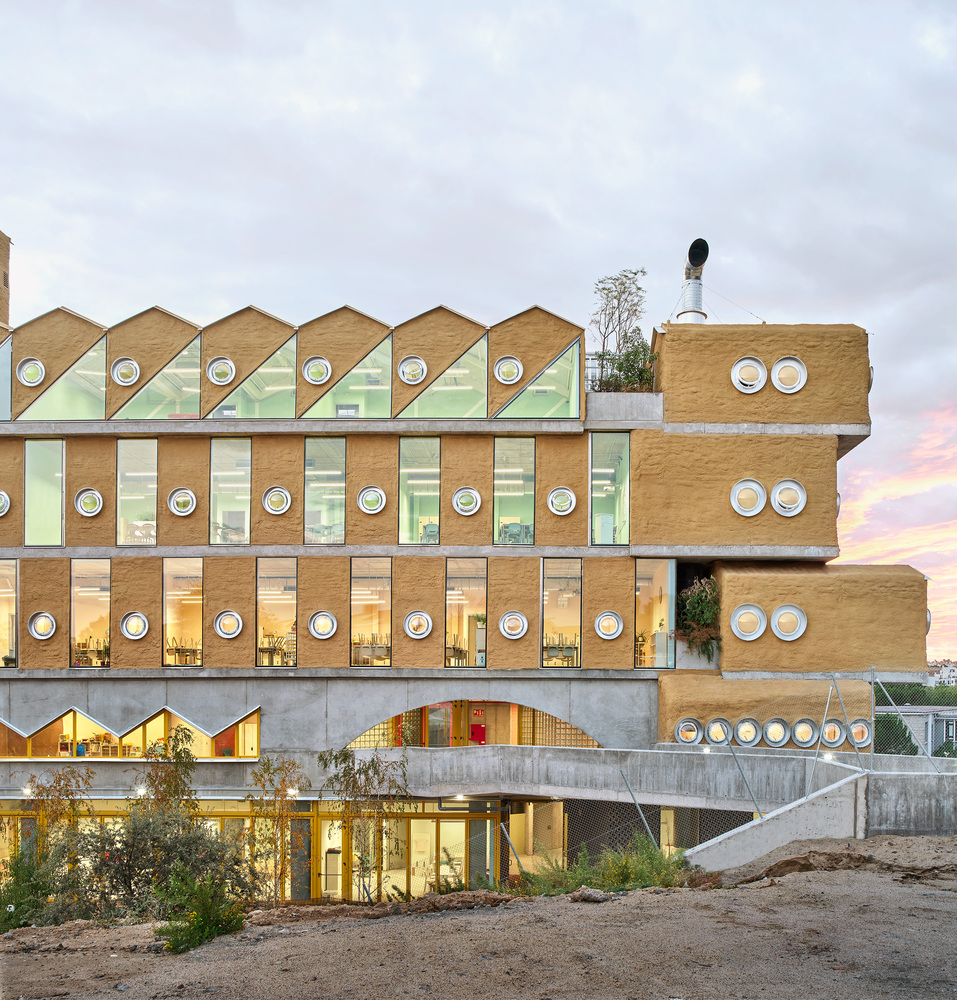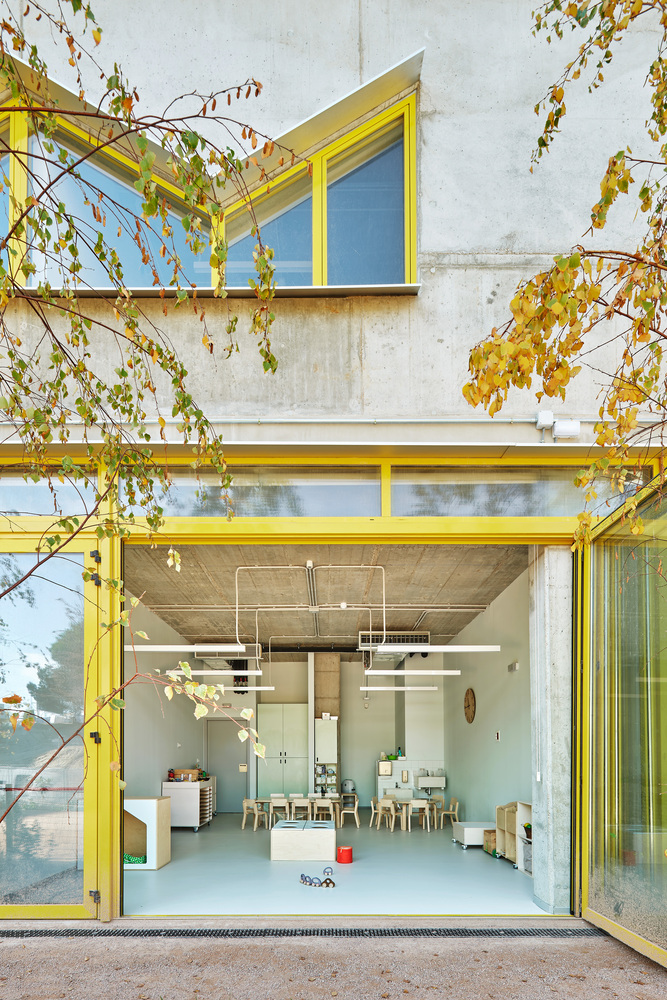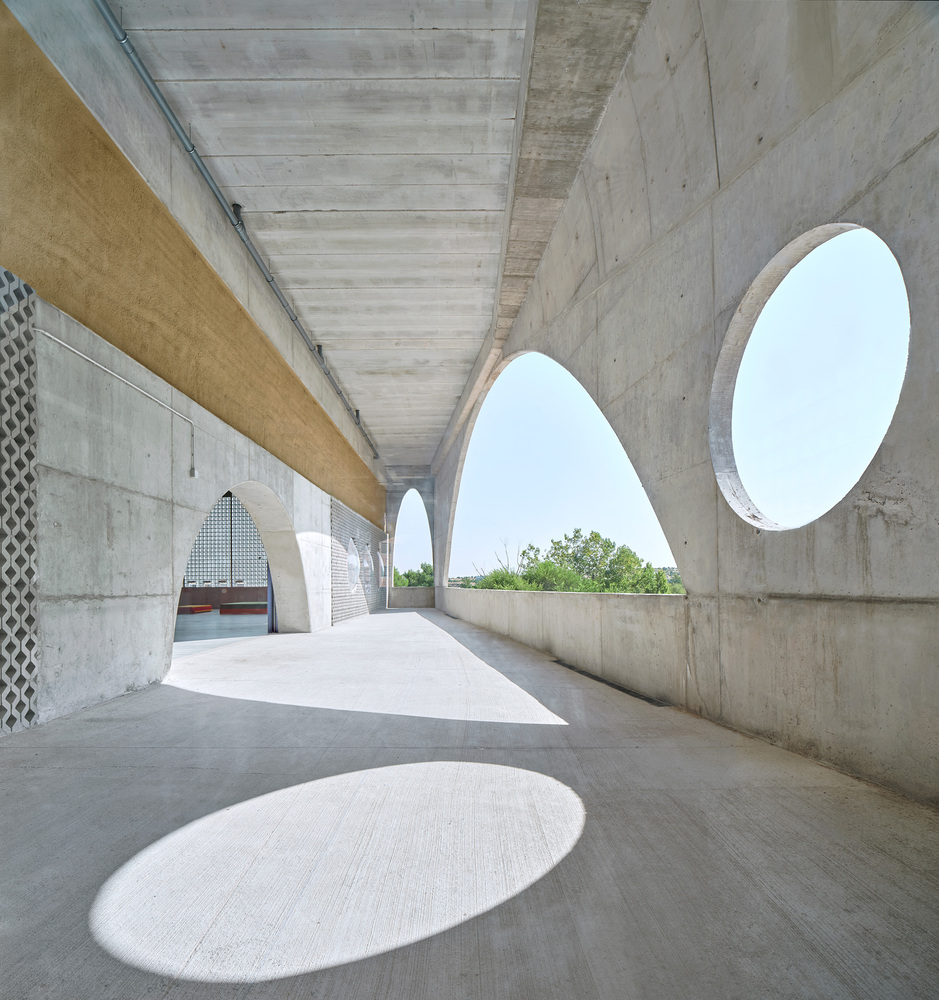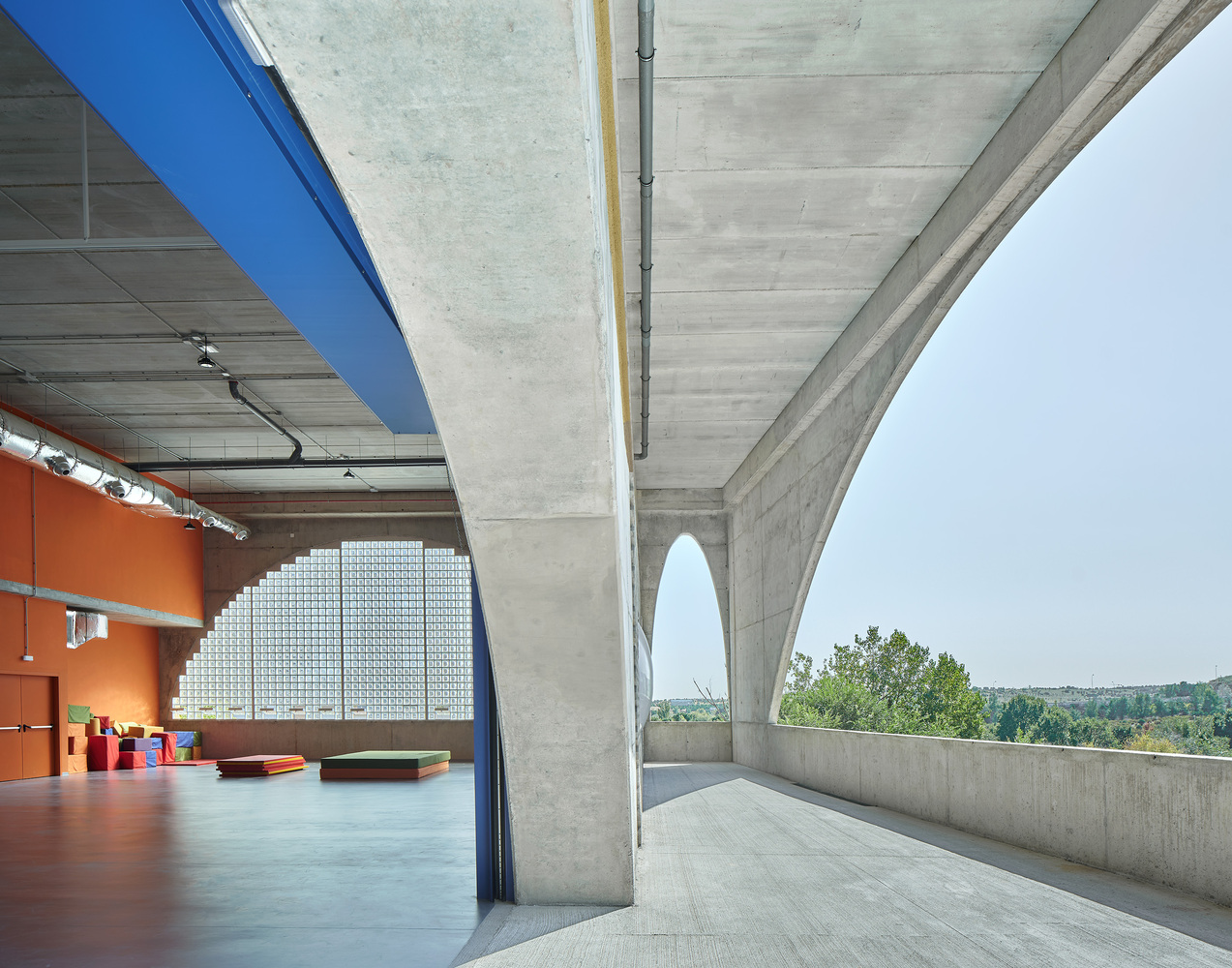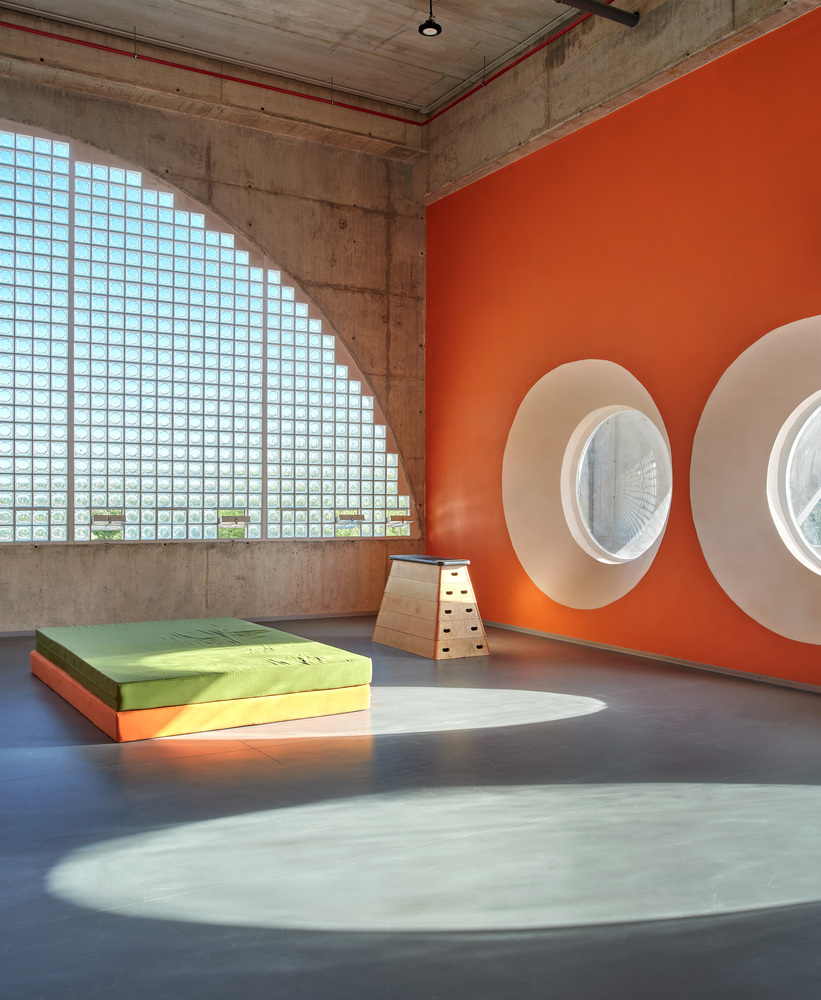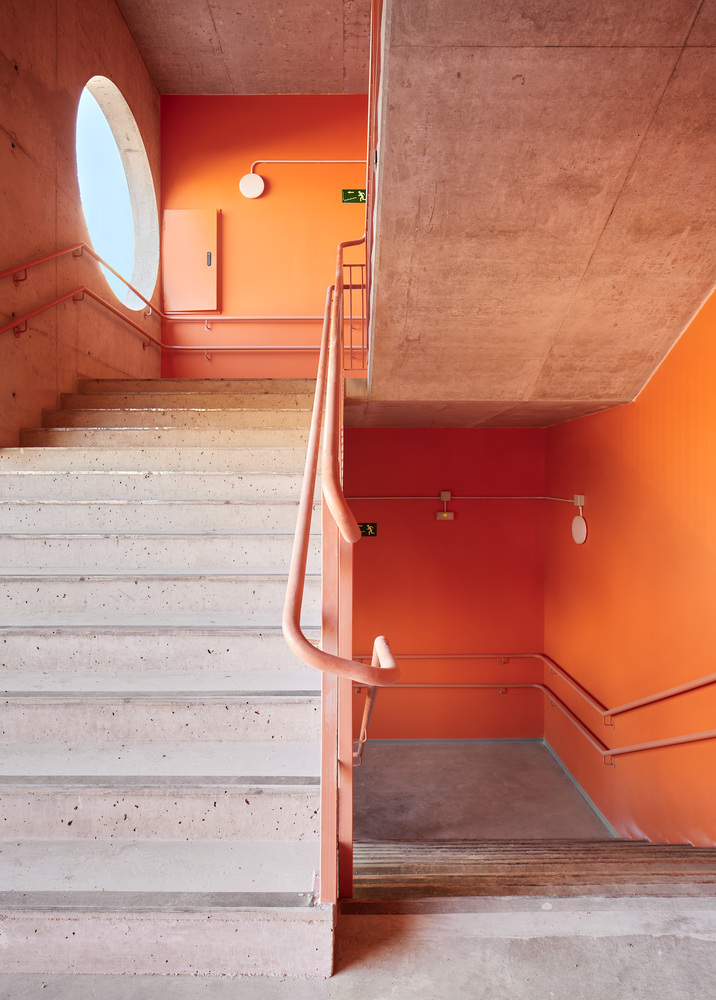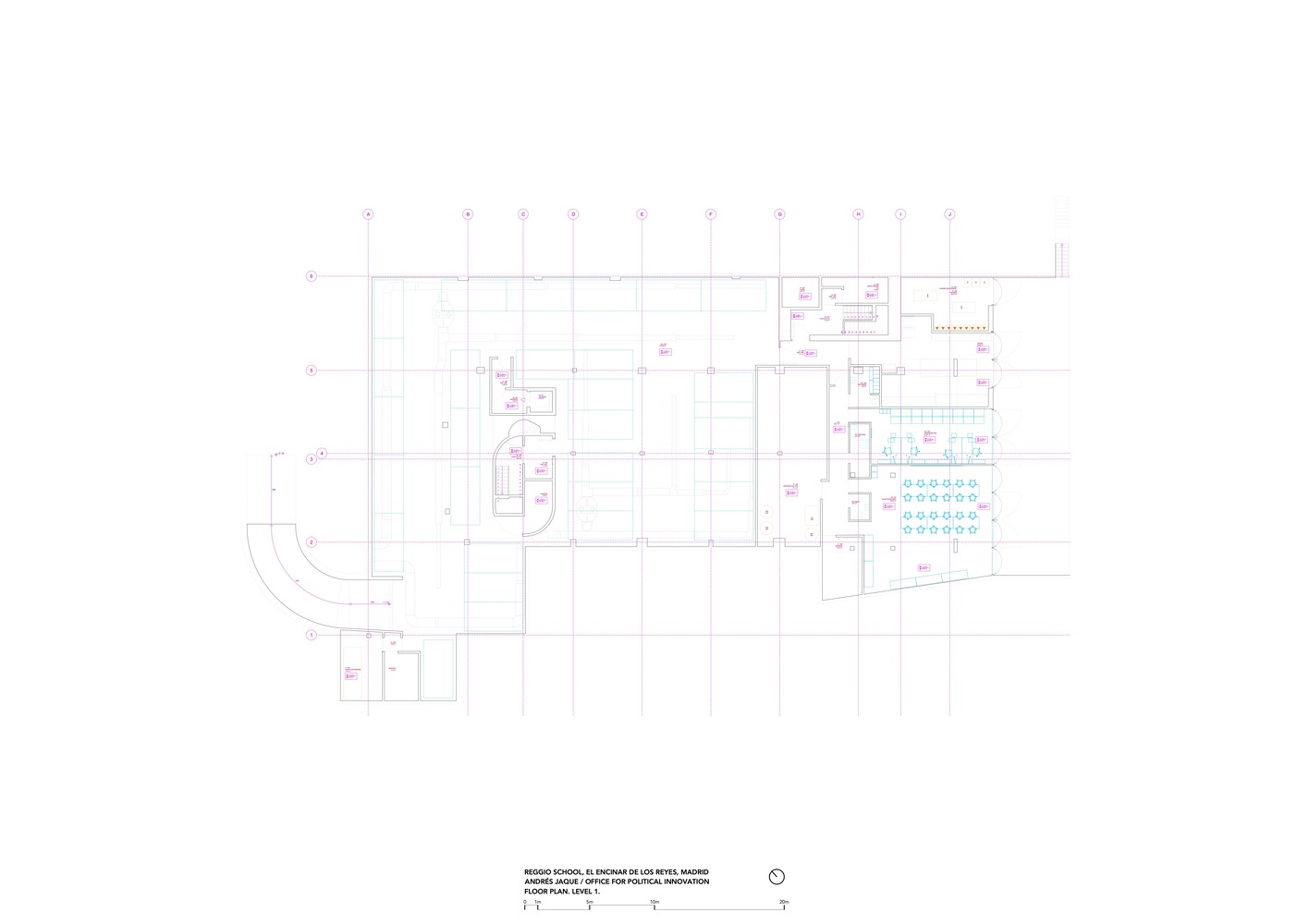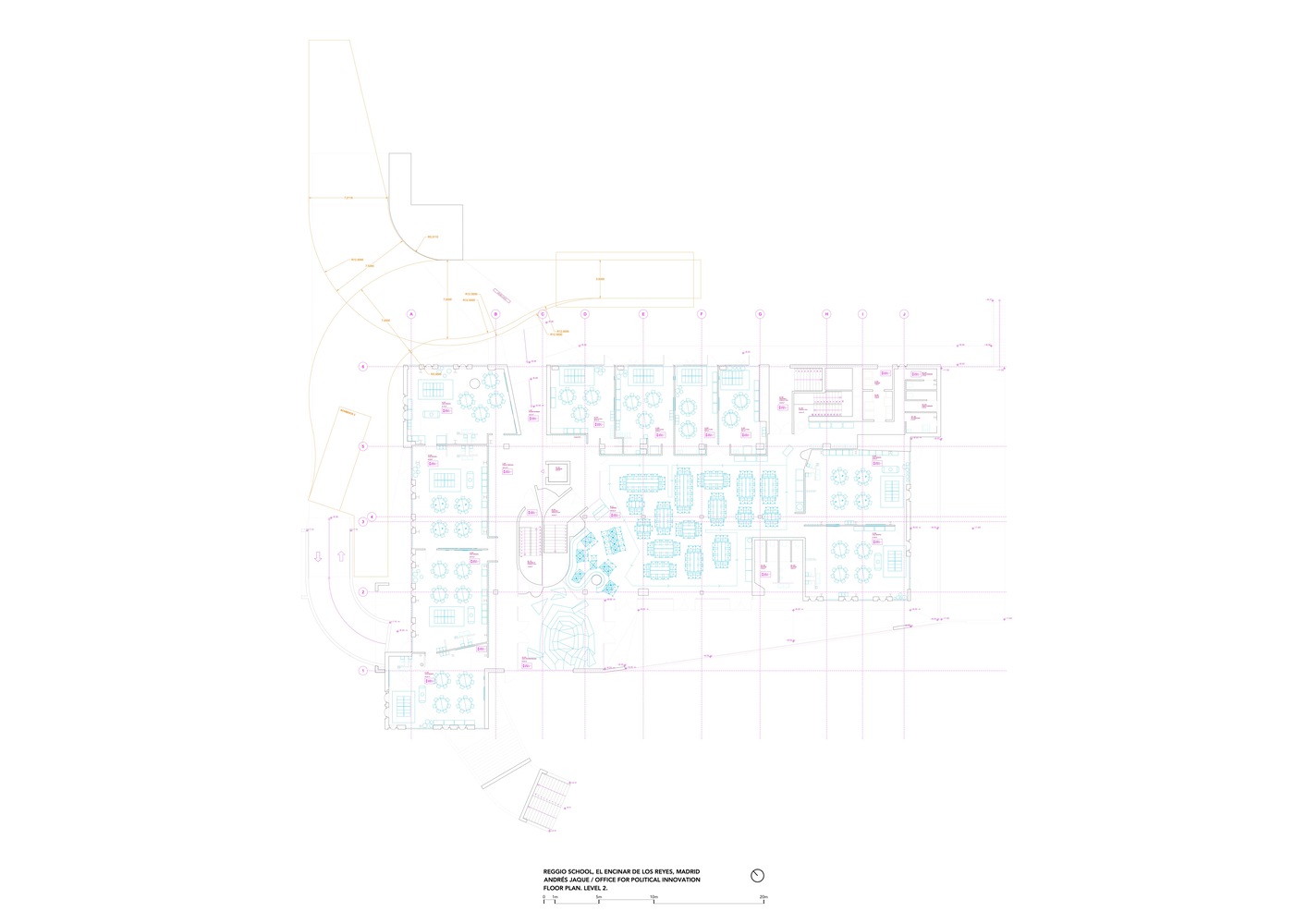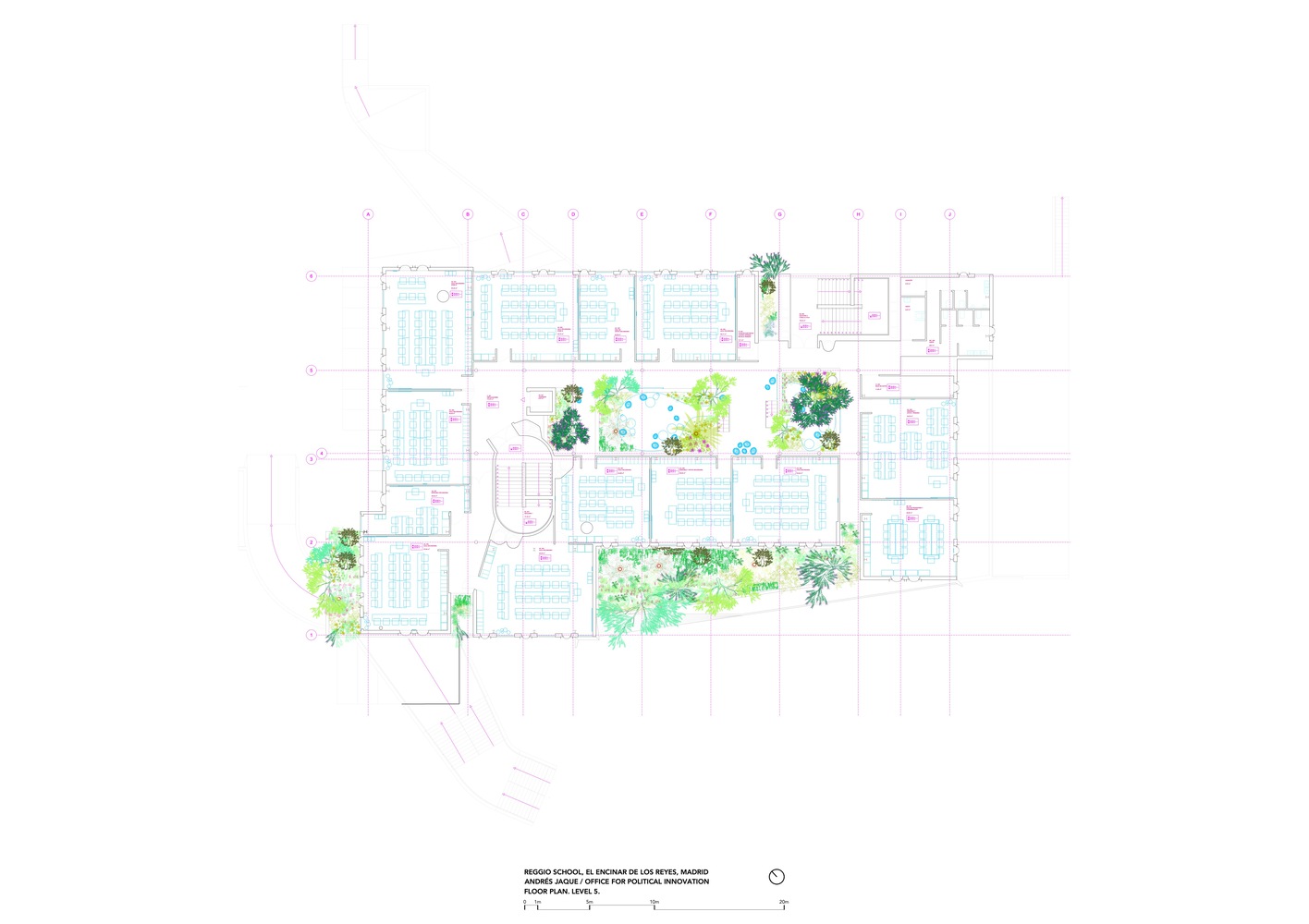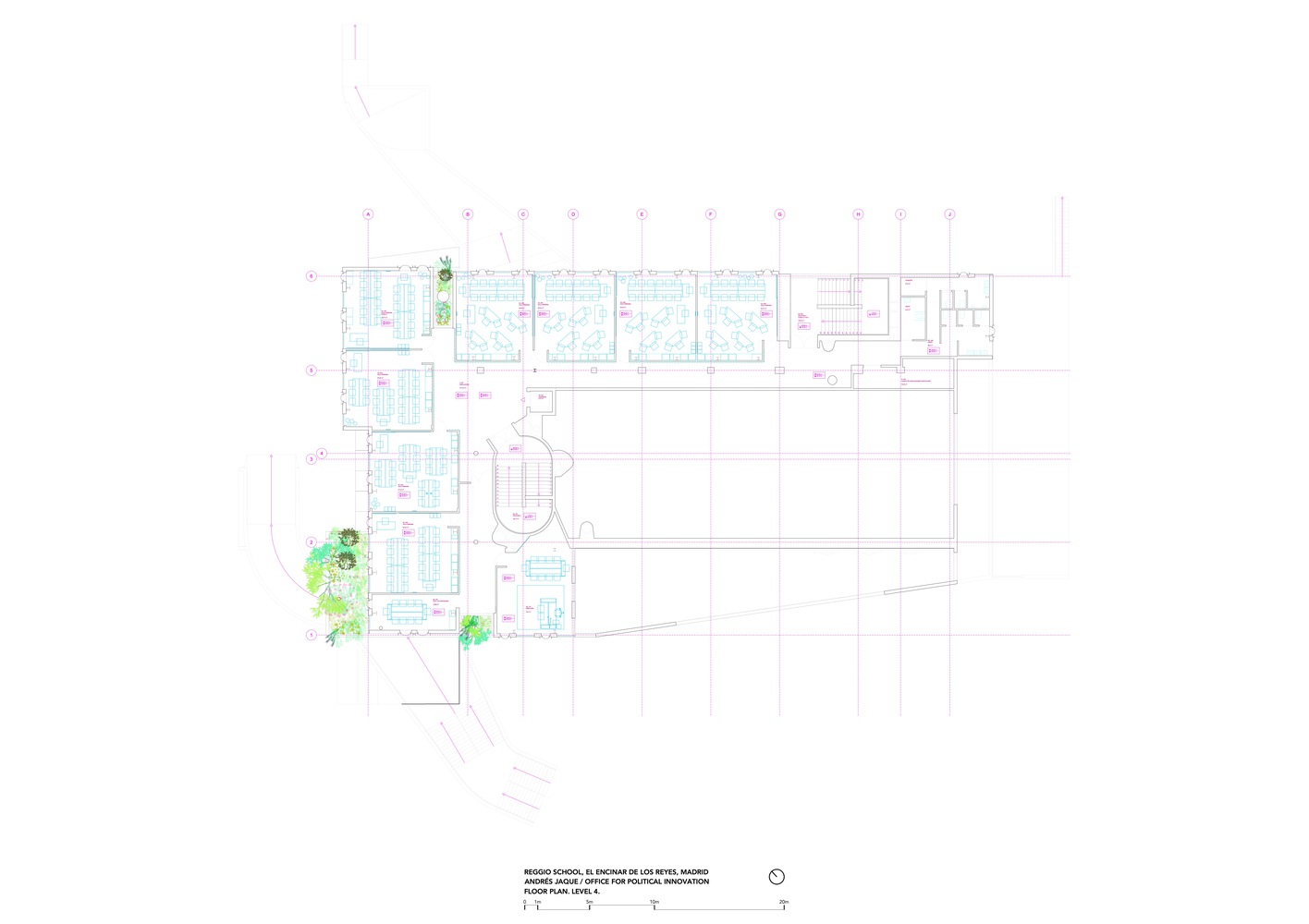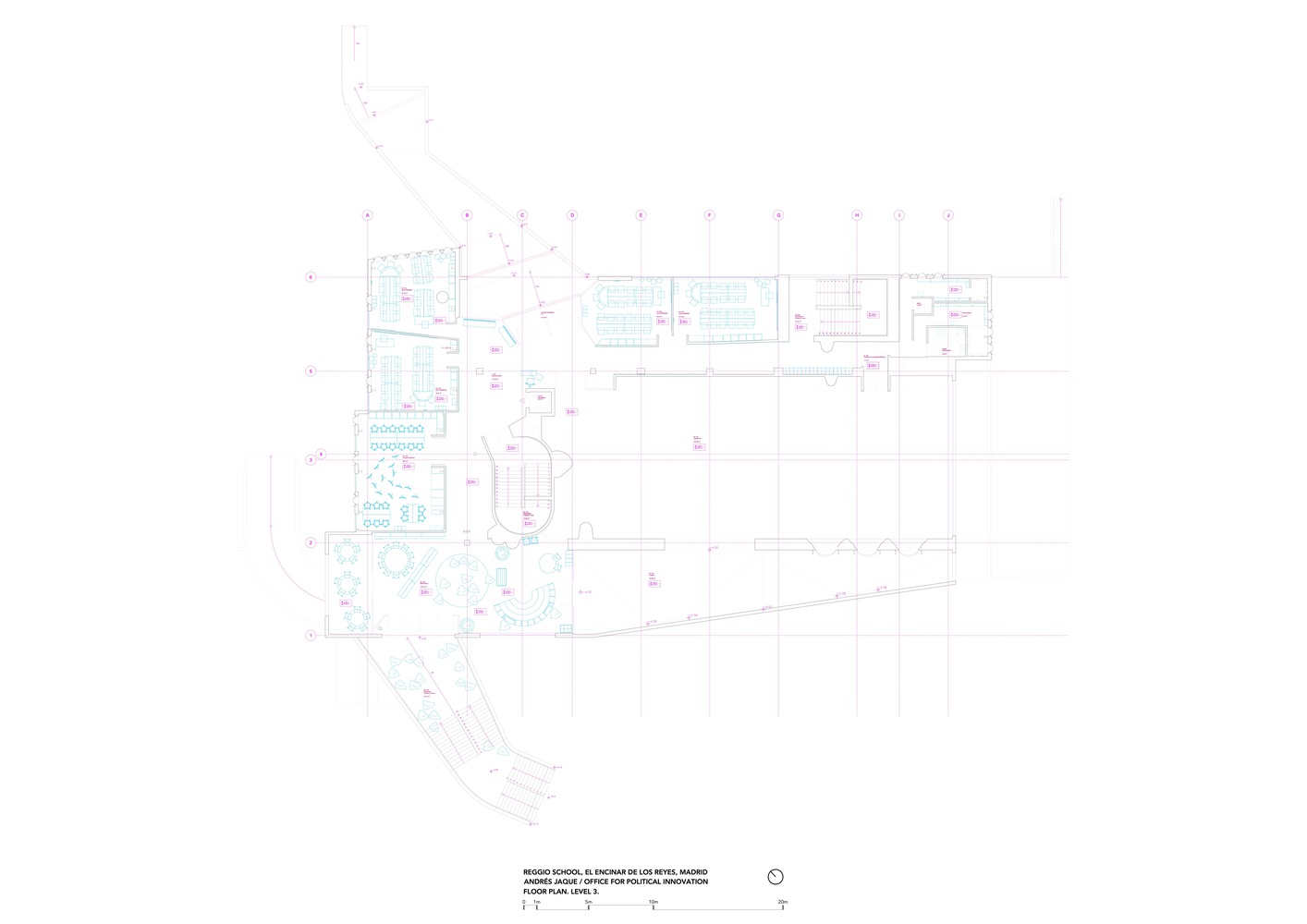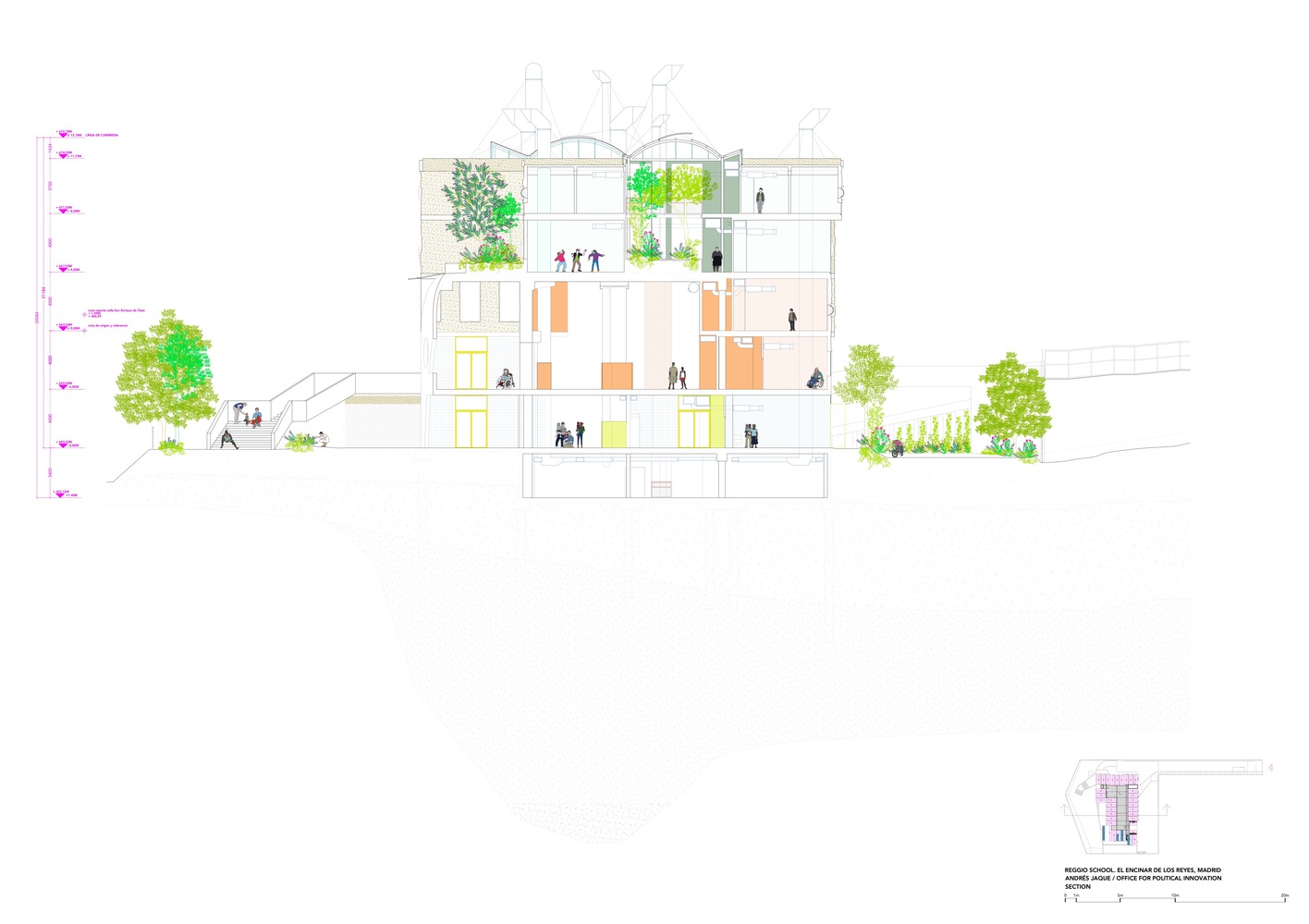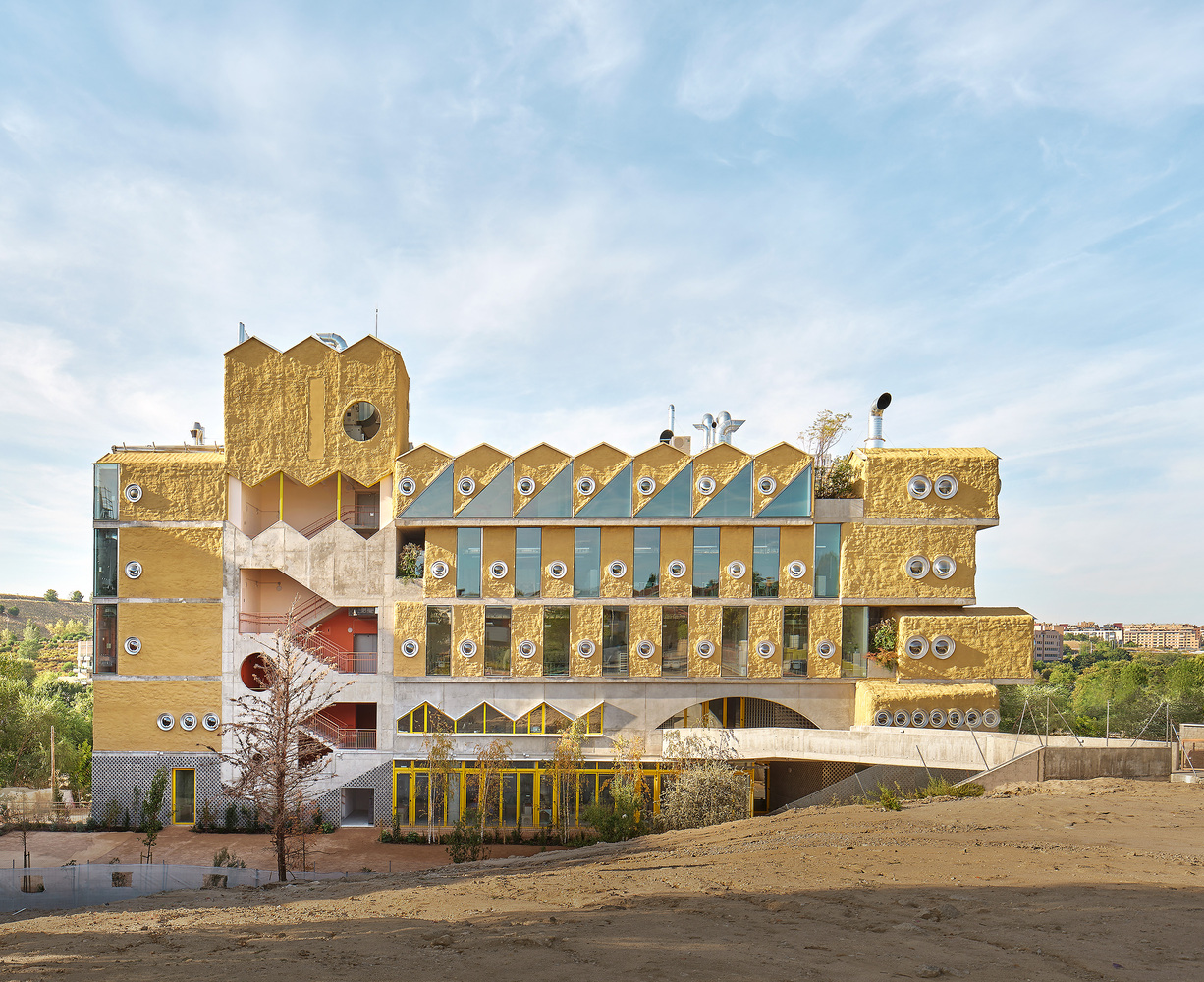
Reggio School / Andrés Jaque Office for Political Innovation
Inspired by the ideas of the Reggio Emilia method, developed in the Italian city at the end of the Second World War by pedagogist Loris Malaguzzi, representing the community’s need to promote a recovery through the education of children, the new Reggio School in Encinar de los Reyes, Madrid – designed by architect Andrés Jaque of Office for Political Innovation and completed at the end of 2022 – is an architectural manifesto of creative freedom. Based on the idea that spaces can arouse in students a desire for exploration and research, the building is thought of as a complex ecosystem that allows them to build their own knowledge through a process of self-driven collective experimentation, thus developing their skills and potentials. Architect Jaque – Dean and Professor of Columbia University Graduate School of Architecture, Planning and Preservation in New York – has created a perfect fusion between architecture and pedagogy by transferring into the project the principles of the school, according to which the three great educators are teachers, family and spaces.
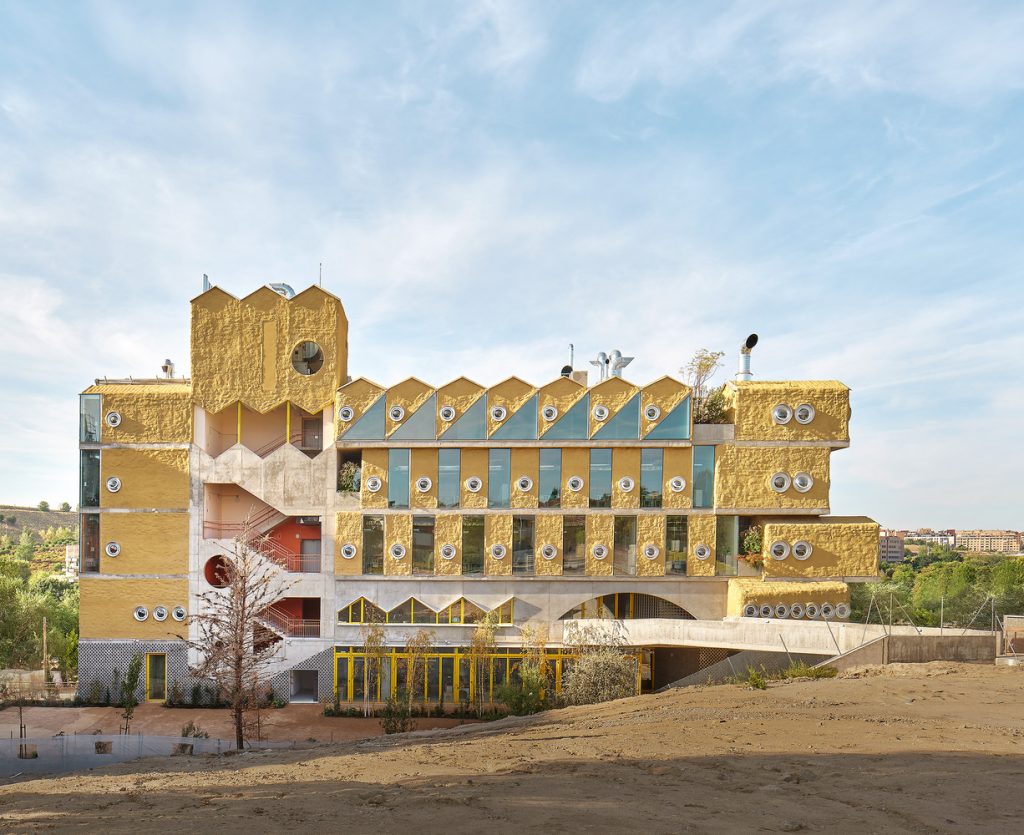
Avoiding homogenization and the unified standards of traditional schools, the building aims to become a multiverse, where the layered complexity of the environments becomes readable and experiential. The school is the result of an assemblage of different climates, ecosystems, regulations and architectural traditions. Instead of opting for a horizontally expanding land-occupation – as is the case of most schools – Reggio School develops vertically: a decision that allows, on the one hand, to minimize the building’s footprint while optimizing the overall need for foundations , and, on the other hand, to create a progression of environments which, starting from the ground floor, intended for the younger children from 0 years of age, accompany the students up to 18 years old to the upper floors, in an arrangement in which growing maturity implies a greater capacity to explore the school ecosystem on their own or with their peers.
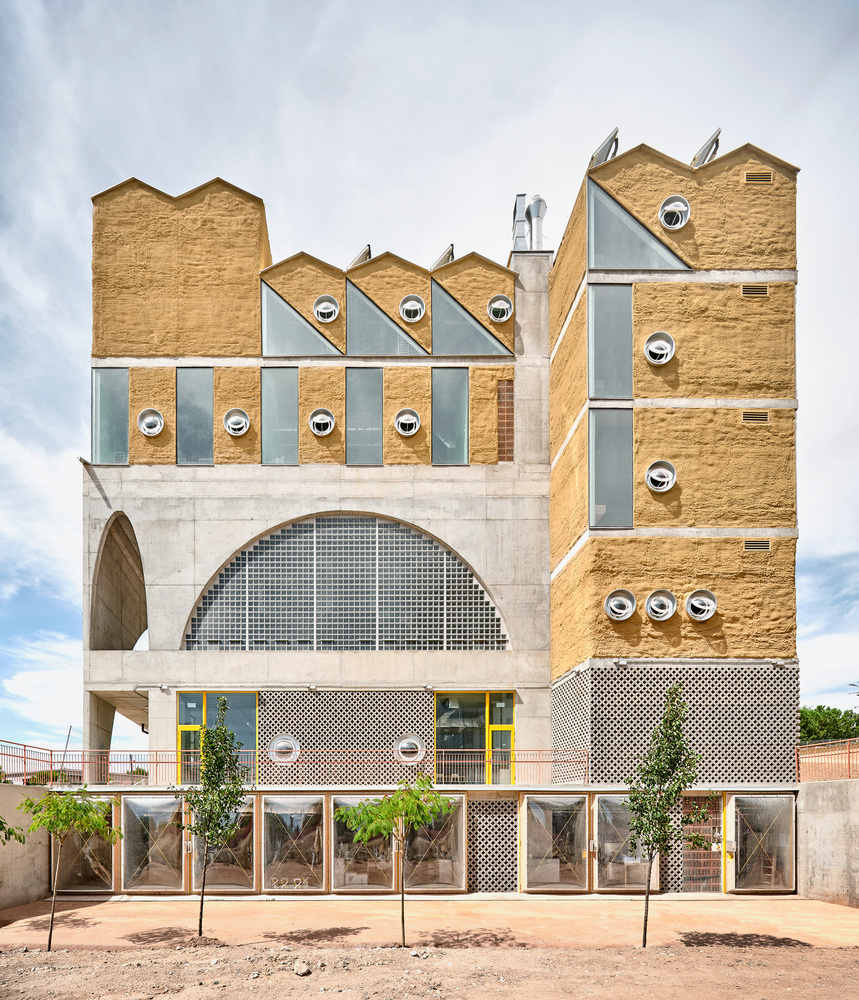
The vertical progression of the Reggio School of Madrid begins with the classrooms on the ground floor intended for younger students and it proceeds to the higher levels where students in intermediate classes coexist with reclaimed water and earth tanks, created to nourish a luxuriant indoor garden reaching the uppermost levels under a greenhouse structure. The classrooms for older students are organized around this inner garden, as in a small village. The second floor, formalized as a large void opened through landscapescale arches to the surrounding ecosystems, is conceived as the school’s main social plaza. This semi-enclosed 8 m high, 470 sqm space was created as a cosmopolitical agora, where some small gardens, designed in collaboration with a network of ecologists and edaphologists, host and nurture communities of butterflies, insects, birds and bats.
Following the principle of teaching through design, all services and mechanical systems, rather than being hidden, are kept visible, so that the flows that keep the building active become an opportunity for students to interrogate how their bodies and their social interactions depend on water, energy and air exchanges. The school unapologetically allows pipes, conduits, wires and grilles to become part of its visual and material ecosystem. As to sustainability, the building exceeds its paradigm to engage with ecology as an approach where environmental impact, more-than-human alliances, mobilization of materials, collective governance and pedagogies intersect through architecture. The low budget strategy to reduce the environmental footprint is based on design principles such as the radical reduction of the construction: no cladding, no drop ceilings, no raised technical floors, no wall lining and no ventilated façades have been used.

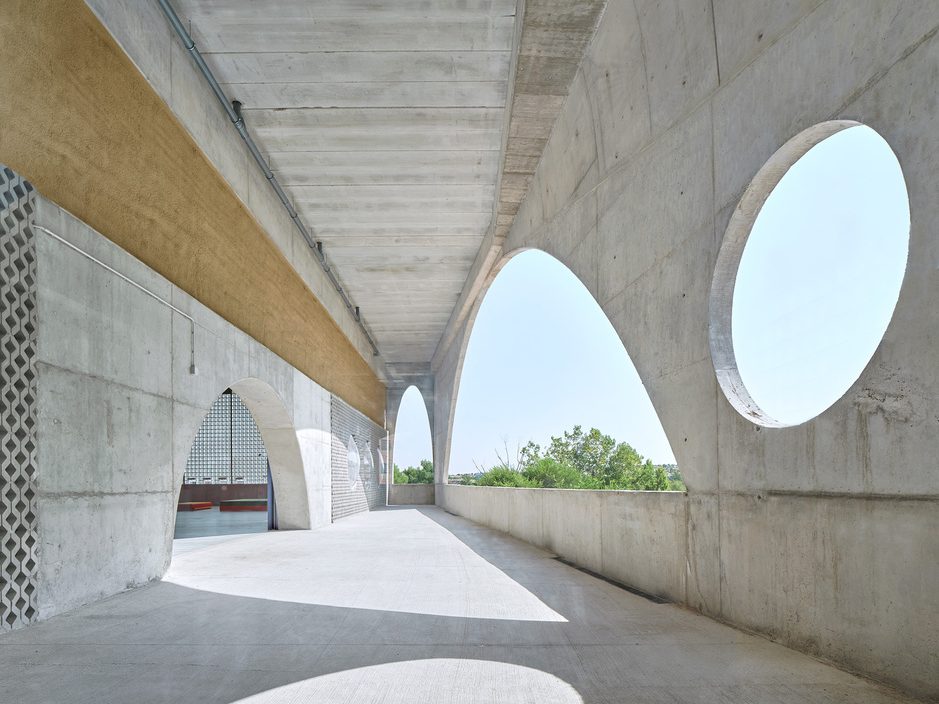
The overall amount of material used in the façades, roofs and interior partitions has been reduced by 48% just by replacing a big part of the construction with simple strategies of mechanical systems distribution and a thermal insulation mainly created with a resistant and natural material such as cork. Furthermore, led by researcher and structural engineer Iago González Quelle, the design team has shaped, analyzed and dimensioned the building structure so that the thickness of the load-bearing walls could be reduced by an average of more than 150 mm compared to conventional reinforced concrete structures. Overall, this resulted in a 33% reduction in Embodied Energy, the energy embedded in the building structure.
Article published on IQD 70
- Architects: Andrés Jaque/Office for Political Innovation
- Team: Roberto González García, Luis González Cabrera, Alberto Heras, Ismael Medina Manzano, Jesús Meseguer Cortés, Paola Pardo-Castillo, Rajvi Anandpara, Juan David Barreto, Inês Barros, Ludovica Battista, Shubhankar Bhajekar, Elise Durand, Drishti Gandhi, Maria Karagianni, Bansi Mehta, Alessandro Peja, Meeerati Rana, Mishti Shah, Saumil Shanghavi
- Structural engineering: Qube Ingeniería de Estructuras
- Services engineering: JG Ingenieros
- Quantity survey (project): Dirtec Arquitectos Técnicos
- Ecology and edaphology: Mingobasarrate
- Project management: Ángel David Moreno Casero, Carlos Peñalver Álvarez, Almudena Antón Vélez
